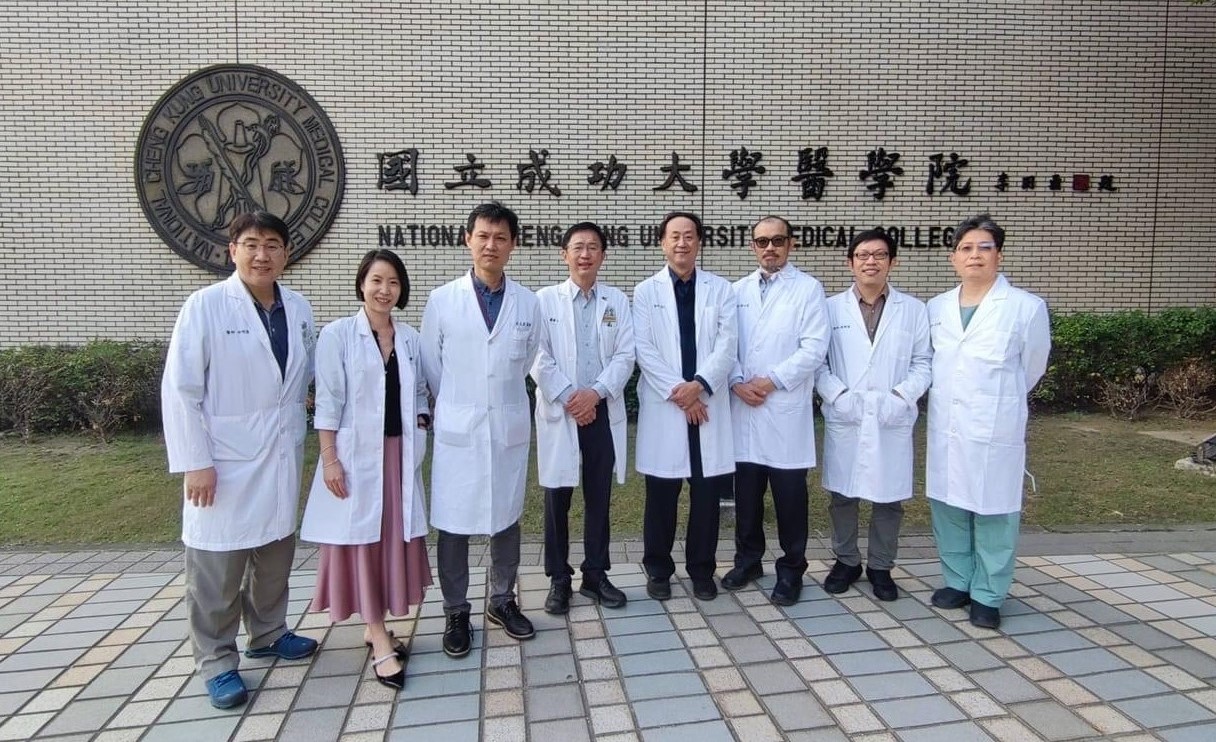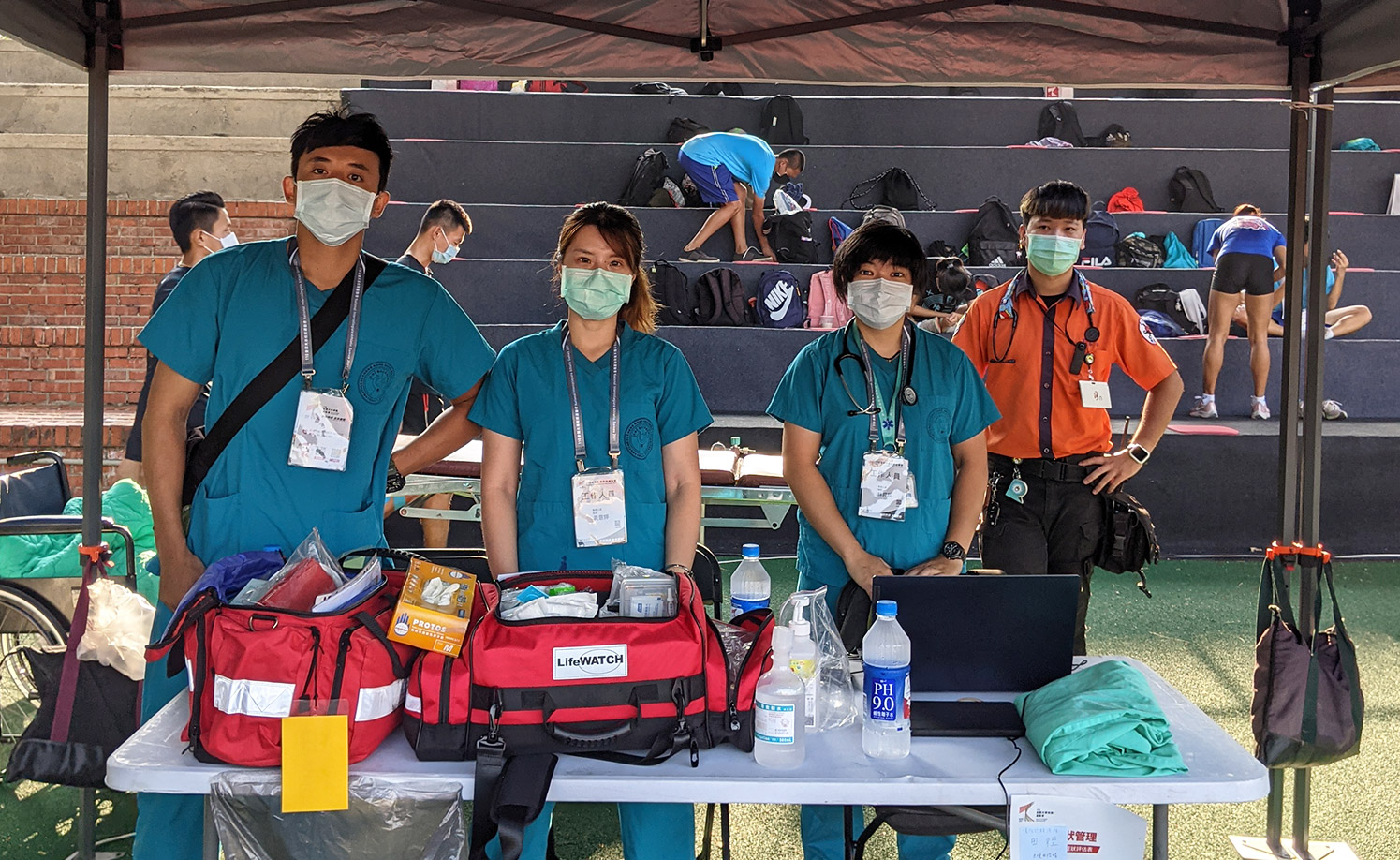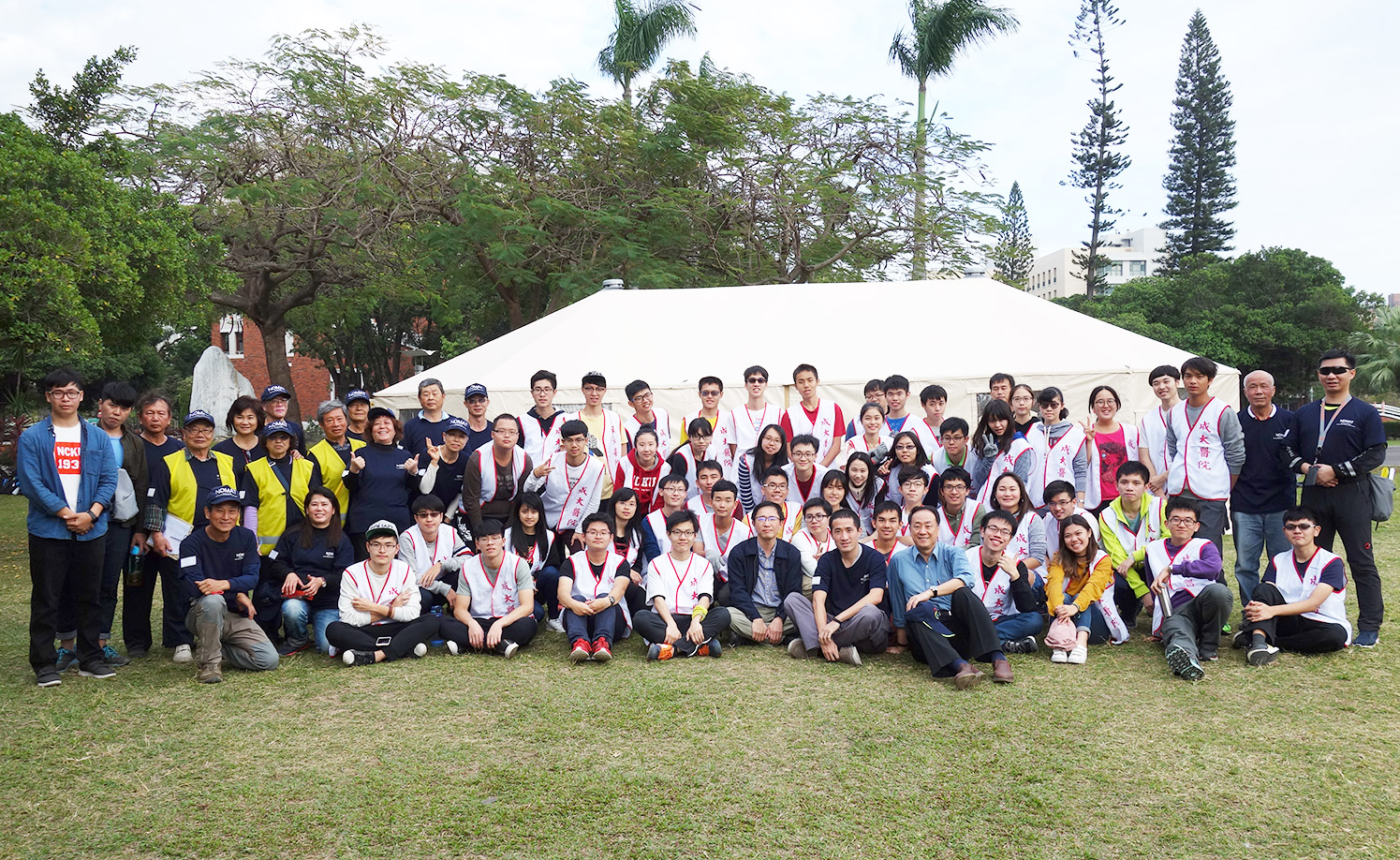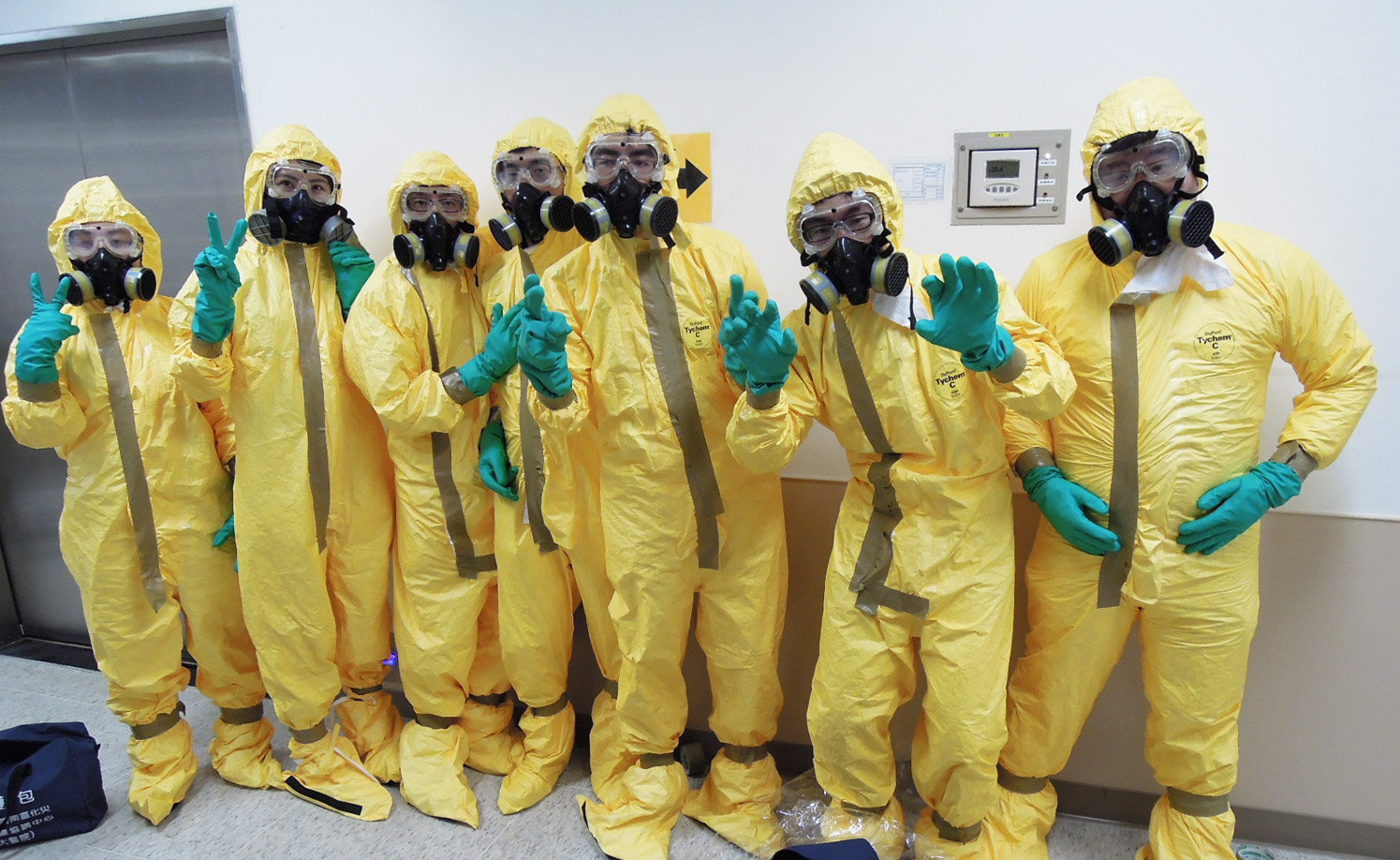Emergency Medical Operations Center
Southern District Emergency Medical Response Center
After China's emergency medical system experienced the September 21 earthquake and SARS storm, the importance of all-weather emergency medical response information, command and coordination has become more prominent. Cooperation and assistance, how to integrate neighboring counties and cities from the horizontal start of fire and disaster relief, health administration, and emergency medical systems, cooperate with the vertical command at the central and local levels to improve emergency medical response capabilities, and achieve effective medical rescue is an important issue today. In view of this, under the planning of the Department of Health of the Executive Yuan, six regional emergency medical response centers (rEOCs) have been established nationwide, including Taipei District, North District, Central District, South District, Gaoping District, and East District. The Southern District EOC was officially inaugurated on December 7, 1993 to set up the "Southern District Emergency Medical Response Center of the Executive Yuan Department of Health" at Chengda Hospital, and on July 23, 102 it was renamed the "Southern District Emergency Medical Response Center of the Ministry of Health and Welfare".
After the 9.21 earthquake, the SARS storm, the Morakot cyclone, the Fuxing air disaster, the Eight Immortals dust explosion, the Kaohsiung gas explosion, the Tainan, Hualien 0206 earthquake, and the Puyuma rollover incident, the Chinese have shown the timing and magnitude of the disaster. With its uncertainties, it also highlights the importance of an all-weather composite emergency medical response information system. Only by actively improving the response capability can disasters be minimized. Therefore, the Ministry of Health and Welfare, in accordance with Article 9 of the Emergency Medical Rescue Act, the Operating Procedures of Regional Emergency Medical Response Centers and other regulations, has entrusted medical institutions to establish a "Regional EMOC" (hereinafter referred to as REMOC). In addition to providing relevant information on emergency medical response from the Ministry of Health and Welfare and local governments, during the usual preparation period, in addition to continuing to enhance the quality and response capacity of regional emergency medical care, in the future, it will also cooperate with the policies of the Ministry of Health and Welfare to strengthen the community promotion of disaster emergency medical care education. Improve and strengthen the overall efficiency of my country's emergency medical response.
"Southern District Emergency Medical Response Center" monitors regional disaster incidents 24 hours a day, assists and grasps the energy and information of emergency medical response in various regions, enriches emergency medical response hardware equipment in the region, and enhances emergency medical response software and hardware in the region. It can continuously integrate the emergency medical rescue manpower and resources of relevant units in Yunnan Jianan, such as health, fire protection and environmental protection. Invest in emergency medical response work in a layer-by-layer mobilization method to strengthen the function of the emergency medical rescue system in the southern district. Improve the region's ability to prevent and prepare, respond to and deal with aftermath of major or special hazardous material (chemical disaster and radiation injury) disasters in peacetime, and assist the central health agency in local emergency disaster response. In the future, it will cooperate with the central or local policies to promote and publicize the disaster emergency medical care education in the community, so as to enhance the public's awareness and self-rescue ability in case of emergency disasters.
the DMAT
921 earthquake, a medical team with experience and expertise is required to quickly and effectively mobilize the disaster area for medical support tasks in the disaster area. According to the instructions of the Ministry of Health and Welfare, the National Disaster Medical Assistance Team (NDMAT) is established, and it is usually actively involved in research and training related to disaster medicine. Carry out emergency medical rescue to solve the local medical overload and restore the local medical energy as soon as possible. In addition to strengthening the medical rescue capabilities in the event of major disasters, effectively integrating the disaster relief system and medical system, and combining the disaster rescue and rescue resources, equipment, and manpower of each unit, the overall disaster rescue and rescue capabilities can be used to implement disaster response and protect the safety of Chinese people's lives and property. Once DMAT goes to work in the disaster area, it needs to carry enough supplies to maintain self-sufficiency for 72 hours in order to carry out medical rescue work in the disaster area. In the event of a large number of injuries, the responsibility of the team is to triage the patient, provide appropriate medical care, and prepare the patient for evacuation. At the same time, if necessary, DMAT can provide first-line primary medical care and help reduce the oversaturated medical load in the disaster area. The main purpose is to set up a medical team that can quickly respond to disaster response and support the medical work in the disaster area until more medical energy is pooled and invested one after another.
About radiation injury
1. The current situation shows that the
application of radiation energy has penetrated into all kinds of daily life, from nuclear power plants, medical imaging examination and radiation therapy, industrial manufacturing applications, academic research, etc. Radiation accidents caused by wide application may cover industrial safety incidents in scientific industrial zones, accidents during the transportation of radioactive materials, accidents in hospitals or research institutions, accidents in nuclear power plants, terrorist attacks, etc.
Accordingly, in order to improve the quality of emergency response to hazardous material disasters in the region, in addition to the usual resource integration and preventive maintenance, the promotion of relevant emergency response education cannot be delayed. Among them, the radiation injury medical response course has become a medical student and One of the important items of on-the-job training for clinical medical personnel. It is expected that under the central or local policy planning in the future, it will also be promoted in the community of radiation energy disaster emergency medical rescue education, and comprehensively improve and strengthen the overall efficiency of emergency medical response to special hazardous substances in my country.
2. Possible injuries
from radiation exposure to large doses of radiation at the accident site may lead to acute radiation syndrome; radioactive substances may also enter the human body through holes or wounds exposed on the victim's body, resulting in internal contamination. ; Radioactive substances may also be contaminated on the victim's clothing or skin, resulting in external contamination. With the movement of the victim, it will expand and aggravate the pollution of the environment, resulting in new victims.
3. Objective planning To
educate medical students and medical personnel on the correct concept of radiation protection, decontamination techniques and necessary treatment for patients with radiation exposure accidents. Improve the medical response capacity of hospitals in the southern Yunnan region for radiation injury accidents. Regularly enrich and replace all hardware facilities and equipment of the radiation injury emergency responsibility hospital in the jurisdiction with the new one, and effectively implement resource sharing.
About poisoning disaster
1. Explanation of the current situation In
response to the current situation of chemical hazards in Taiwan, when there is a danger to health and human life, medical institutions are very important units for initial response. From the on-site poisoning disaster response to the pre-hospital fire department , Environmental detection and maintenance of the Environmental Accident Professional Technical Team of the Chemical Bureau of the Environmental Protection Agency, to the emergency response of medical institutions (decontamination of chemical disaster patients, emergency medical treatment), each link is interlinked, and it is the needs of medical practitioners. The knowledge learned can be used to assist in the handling of patients in the event of a chemical disaster; especially for the medical and response personnel in the hospital responsible for chemical disaster response, these training courses are a very important part of the success of the response mechanism.
According to the initial and advanced course modules for chemical disasters formulated by experts in 2018 by the Disaster Medical Rescue Training Center of the Ministry of Health and Welfare, it is aimed at the knowledge, technology, common problems and solutions needed by the responders of Yunnan Jianan Chemical Disaster Emergency Hospital. Education Training.
2. Initial online course for targeted planning
of chemical disasters:
to enable front-line personnel in factories and medical institutions in southern Yunnan to learn through cloud-based learning in their busy schedules to understand the procedures for responding to regional chemical disasters and the role of hospitals. and the required knowledge and skills.
Advanced Physical Course for Chemical Disasters:
Possible response strategies, understand the limitations of existing response procedures, assist response personnel to learn experience through case discussions, and promote the development of response strategies.
Semi-early warning drills
for chemical disasters: By participating in the above-mentioned courses, the responsible hospitals for chemical disasters will check whether their chemical disaster response plans need to be revised, whether the process is smooth, whether the moving lines need to be improved, and whether the personnel protective clothing is appropriate to wear and take off. measure.






